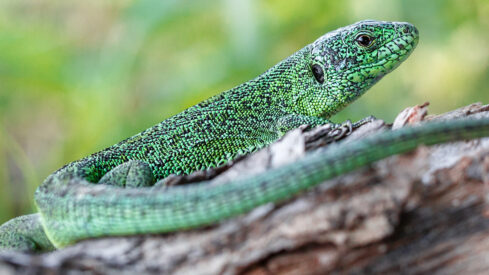New market opportunities as the number of ‘other’ pets is on the increase

As in the overall pet market, the COVID-19 pandemic has had a huge, beneficial influence on the US market for the ‘niche’ fish, small mammal, herptile, and bird products markets. Actual sales and demand have risen to historically high levels.
Not just dogs and cats
Of the US households that took pets in the twelve- month period ending February 2021, 31% took pets other than dogs or cats. This is a disproportionately high number, given that such ‘other’ pets were kept by only 20% of pet-owning households two years earlier, in 2019.
Currently, 12.2% of US households have pets other than dogs and cats, which adds up to a total of 16 million households. This surge in the pet population has led to a corresponding sales increase in the US ‘other’ pet products market: with sales up by 18.5% to no less than €2.37 billion ($2.8 billion).
Pet supplies
For many types of durable pet supplies, replacement or upgrading is discretionary and relatively infrequent, often simply due to inertia of the pet owner. But a new pet means the purchase of a broad selection of new pet products, including enclosures (aquariums, habitats, cages, and accompanying accessories), as well as pet feeding and watering accessories and toys. Most, if not all, of the ‘other’ pets acquired during the pandemic, required pet parents to spend on products for their new companions. New pets also fuel demand for non-durable supplies such as food and hay bedding.
Education-first approach
It is to be expected, that these newly acquired pets will continue to drive sales, for as long as the owners keep the pets. With between 8% and 17% of ‘other’ pet owners indicating that they are ‘beginners’ when it comes to their level of experience caring for their pets, providing tools to educate them on how to be a good pet parent could be an attractive market opportunity.
In fact, looking ahead, marketers and retailers are well-advised to take on an active role in encouraging ‘other’ pet owners to learn how to care for their new pets. Doing so will not only promote pet health and safety, but foster the bonding between the owner and his pet. In this way, it is more likely that pets will be allowed to stay in their new homes once life returns to normal post-pandemic, and parents go back to work and children to school.
Multi-pet households
During the pandemic, ‘other’ pets became especially popular as new members of the family among households that already had a dog or cat. Such ‘multiple pet’ households (which includes having multiple types of pets and/or multiple pets of a certain type) are especially attractive for the pet industry. After all, pet ownership is a cost incurring and highly discretionary expense.
Households that can afford to add pets during a global health crisis are likely to be relatively secure regarding their income.
One of the main reasons people get pets other than dogs or cats, is for the enjoyment of watching and interacting with them. Results from a recent survey by Packaged Facts shows that nearly two-thirds of owners of ‘other’ pets (65%) enjoy keeping these pets because they are fun to watch and observe. Over half (52%) simply love that specific type of pet. Other common motivations include that these pets are fun to interact with, bring liveliness into the home, and provide companionship.
